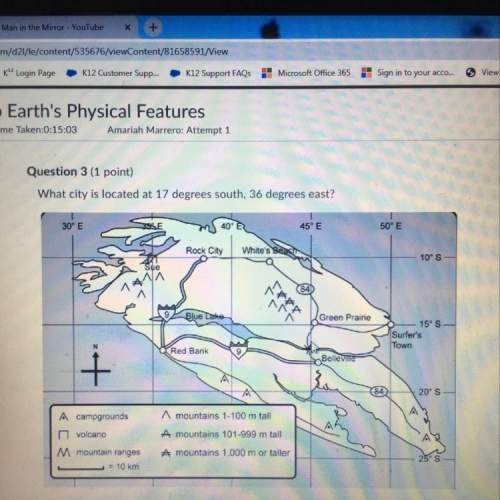
Chemistry, 13.10.2020 20:01 yorblayo17011
Density in the world around us...
Look around you and explain how you use your knowledge of density in your daily life.
For example: If someone is throwing a big rock at you, you won't try to catch it because you know due to it's density it will be extremely heavy. If s
you, you will try to catch it.
Try to see how you apply this knowledge without even realizing it
Please post one example below,

Answers: 1


Another question on Chemistry

Chemistry, 21.06.2019 22:10
Which form of relativism states that people rely on their own standards of right and wrong when making a decision?
Answers: 1

Chemistry, 21.06.2019 22:50
Achemical reaction (also known as a chemical change) produces substances that are chemically different from the starting materials. an example of a chemical reaction is the formation of water from hydrogen and oxygen gas.in a physical change, a substance changes its physical appearance but not its chemical identity. an example of physical change is the formation of liquid water from solid water, a familiar process called melting. physically, liquid water looks very different from solid water (ice) but the chemical identity, water, is the same for both. which of following changes that affect the composition of our atmosphere involve physical changes and which involve chemical reactions? oxygen gas changes to ozone during thunderstorms carbon dioxide is produced by the combustion of gasoline in an automobile engine. when coal, oil, and natural gas are decomposed in landsills they produce methane gas. freezing rain develops when a warm air mass overrides a cold air mass. fog forms from water vapor when the temperature drops below the dew point
Answers: 1

Chemistry, 22.06.2019 09:00
What type of energy do chemical bonds have? what type of energy is it converted to during chemical reactions? question 15 options: chemical bonds have kinetic energy, which is converted to potential energy during chemical reactions. chemical bonds have electric energy, which is converted to potential energy during chemical reactions. chemical bonds have heat energy, which is converted to kinetic energy during chemical reactions. chemical bonds have potential energy, which is converted to heat energy during chemical reactions.
Answers: 1

Chemistry, 22.06.2019 10:30
Acompound has a molar mass of 92.02 grams/mole, and its percent composition is 30.4% nitrogen (n) and 69.6% oxygen (o). what is its molecular formula? a. n2o4 b. no2 c. n2o d. n4o2
Answers: 1
You know the right answer?
Density in the world around us...
Look around you and explain how you use your knowledge of density...
Questions

Mathematics, 11.11.2020 14:00


English, 11.11.2020 14:00

English, 11.11.2020 14:00

Mathematics, 11.11.2020 14:00




English, 11.11.2020 14:00

Mathematics, 11.11.2020 14:00


Mathematics, 11.11.2020 14:00

English, 11.11.2020 14:00

Mathematics, 11.11.2020 14:00

History, 11.11.2020 14:00

History, 11.11.2020 14:00




English, 11.11.2020 14:00




